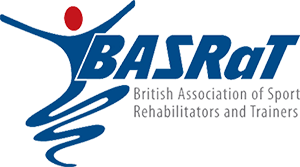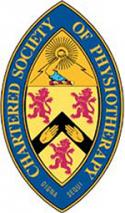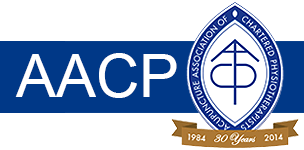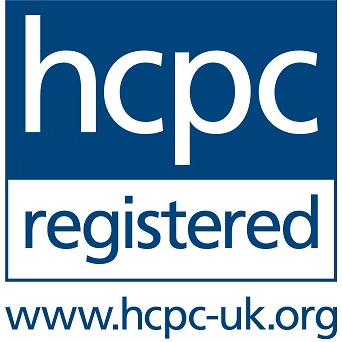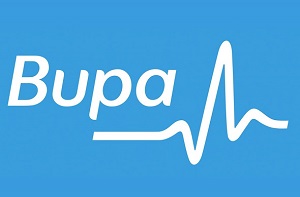What we treat
Dizziness
Patients can describe the sensation of dizziness in many different ways. Dizziness can have massive impacts on quality of life, ability to function and commonly results in patients avoiding social situations. Symptoms can vary in provocation, intensity and duration. Dizziness generally occurs when thebrain receives conflicting information from the eyes, inner ear and your body receptor sites, subsequently you may experience a feeling that things around you are moving. It is important that you see your GP about persistent dizziness to rule out conditions not covered in the scope of Physiotherapy. There are numerous common causes of dizziness that Physiotherapists can help you with. A detailed examination of your neck, co-ordination, reflexes, sensation, and specific tests aimed to assess the inner ear and vertebral basilar artery may be performed. Following examination various treatment techniques may be used to try and resolve your symptoms. However, your dizziness may be temporarily exacerbated therefore it is usually recommended you have someone available to drive you home.
TMJ/Jaw pain
The temporomandibular joint connects the lower jaw to the temporal bone of the skull. TMJ disorders can occur from traumas such as whiplash, clenching the teeth, stress, dislocation or osteoarthritis of the joint. You may experience pain, discomfort, locking sensation, difficulty chewing and swelling. It is helpful to apply ice to settle the inflammation, eat softer foods to avoid as much chewing, wear a night guard, and avoid extreme movements. Your physiotherapist can help you with trigger point and muscle release, ultrasound and mobility exercises. Your Physiotherapist may also assess your neck as it is not uncommon that the TMJ may become a problem owing muscle imbalance and poor posture at the neck.
Neck pain
Neck pain is very common and can be caused by many different structures within the cervical spine, it can occur as a result of injury, come on acutely after sleeping awkwardly or sat in a draft known as wry neck or torticollis. Or it may have come on slowly, seemingly of unknown causes, this may be attributed to posture, repetitive strain or wear and tear – otherwise known as spondylosis, spondylitis or arthritis.
The neck is a very strong structure and in most cases the cause of pain is not concerning or anything to worry about, your Physiotherapist will assess you and help to determine what may be causing your condition, rule out serious pathology, assess for nerve involvement and help you on the road to recovery.
Physiotherapy techniques are very effective in the treatment and management of both new and persistent neck pain, some patients may experience long term problems owing to their work, prolonged postures, stress or previous spinal injuries / surgery and your physiotherapist will be happy to outline a treatment schedule and use appropriate treatment modalities to help manage your condition.
Whiplash
Whiplash injuries are most often caused in motor vehicle accidents, but can be caused following a fall or sudden jolt. While whiplash type injuries are not exclusive to the neck, they are most commonly experienced at the neck. Whiplash at the neck occurs when the neck is subjected to rapid acceleration then deceleration forces, this creates a torsion through the joints and soft tissues which causes local tissue damage and protective muscle spasm. Your symptoms may not have occurred at the time of injury but developed over the few days following, it is common for people to suffer with pain and difficulty moving the head and neck, you may also experience headaches, shoulder or arm pain. Your physiotherapist will assess you to establish the extent of your injuries, any nerve involvement and can help to settle down inflammation, restore movements and reduce muscle spasm to help speed up your recovery.
Shoulder pain
The shoulder is a complex joint that is a ball in socket joint and has movement in many different directions. As a consequence of this increased movement we are open to more opportunities for injury, function relies upon good quality movement at the shoulder joint and the shoulder blade, with a particular movement sequence. The shoulder blade is the anchor for the rotator cuff muscles which turn to tendon and attach into the humeral head to stabilise the ball in its socket and are integral to a functioning shoulder.
Adding to the mix, there are numerous soft tissue’s around the shoulder such as the joint capsule, bursa and ligaments which are full of receptor sites and can generate high levels of pain if they are irritated or undergo structural changes in line with certain conditions that arise at the shoulder.
Owing to the complexity at the shoulder it is important you seek advice from a qualified health professional for an individualised assessment. The most common conditions at the shoulder are Impingement syndromes, subacromial pain syndromes, tendinopathies of the rotator cuff or long head of biceps, rotator cuff tears, contracted shoulder / frozen shoulder/ adhesive capsulitis, instabilities which may be due to trauma, post dislocation, or associated with joint hypermobility syndromes.
Your Physiotherapist is highly skilled in helping to determine what is causing your problem, they will help you to identify contributing factors and have multiple treatment adjuncts that help promote healing, restore good quality movement and restore function / return to sport. Current research proves Physiotherapy is extremely effective in the management of shoulder conditions.
Your Physiotherapist is also integral in the rehabilitation of your shoulder following surgery, the Physiotherapist will need to work closely with your consultant to help optimise your recovery.
Mid back or thoracic pain
The thoracic spine is the home to the rib cage, being the middle of your back it is subjected to a lot of stress during prolonged seated postures and subsequently can become stiff and tight. It is also host to the shoulder blades and subsequently can play a part in the rehabilitation of shoulder injuries. Pains can arise from many structures within the mid back, ranging from muscle spasm and trigger points, to dysfunctional costovertebral joints (where the rib joins the back). Your Physiotherapist will perform an individual assessment starting from a detailed history where they may ask you questions around the patterns of the pain- things that make it worse or better, any family history of inflammatory pathologies, history of smoking or osteoporosis to help identify potential contributing factors to your problem. The physiotherapist will also perform a physical examination of the spine to assess the mid back, muscles and joints local to the problem area.
Following examination the Physiotherapist will outline an individualised management plan, this may consist of home exercises, manipulations, mobilisation, muscle energy techniques, taping and soft tissue techniques to help restore normal movement, improve posture and reduce pain.
Low back pain
Low back pain is a condition 90% of the population will experience at some point in their life. It is extremely distressing and disabling. It is very important to understand the spine is a very strong structure and levels of pain do not correlate with the levels of harm or damage, low back pain is rarely sinister in nature and commonly nothing to worry about, although you should always seek advice from your GP or Physiotherapist. Early intervention with your Physiotherapist can help to identify potential causes of your problem and help restore your movement, confidence and reduce pain to help get you back on your feet.
If you experience problems with your bladder or bowel, have reduced sensation of your genitals, anus or groin, sexual dysfunction and pain / weakness in both legs you should urgently seek medical attention.
In a small percentage of those who suffer with low back pain your condition may not fully resolve, it may become persistent or episodic, the cause of this is not fully established, although it may be down to manual work, prolonged postures, over use or deconditioning. Your Physiotherapist is perfectly equipped to help you manage chronic or persistent low back pain, various treatment modalities can help reduce pain, reduce re-occurrence frequency, improve tissue health and with support from your therapist we can help you manage your problem and stay active.
You may also experience leg symptoms as a result of your spinal condition, this can be due to referred pain, nerve root irritation and nerve root compression which can range from pain and altered sensation to weakness in your leg, your physiotherapist will fully assess your condition and recommend appropriate management or referral onwards for further medical input.
Your Physiotherapist can use many different treatment techniques to help you with a range of spinal conditions such as post-surgery rehabilitation, following slipped disc, bulging discs, muscle spasm, feeling like you are not aligned/ out of place, scoliosis, spondylosis, arthritis, spondylolisthesis, weak core muscles and hypermobility.
Muscle strains; incl quadricep, hamstring, calf, groin
Muscle strains occur due to overstretching, overexertion or overuse. Part of the muscle or tendon can become stretched or torn. The most common muscle groups are your calf and hamstrings. It is important in the first instance to settle the inflammatory reaction by following the RICE principle; relative rest, ice, compression, elevate. As the tissue begins to heal, it is important to load and stretch the muscle or tendon appropriately. To speed up the healing process the physiotherapist can use techniques such as soft tissue mobilisation, manual stretching, ultrasound, TENS and provide you with a progressive strengthening programme to load the tissue appropriately. It can take anywhere from 6-12 weeks for the tissue to reach its full strength.
Hip, knee and ankle pain
All of these joints can present with various symptoms including one or many of the following; pain, swelling, instability, discomfort at rest or on weight bearing, giving way or locking
Ankle, knee and hip problems can arise from numerous structures in and around the respective joints. This may be associated with tendons that insert in to the joints that become irritated following trauma or repetitive strain. They also have very small pads of fat around them called bursa’s. These can become inflamed and cause pain on both rest and movement.
Looking deeper in to the joints there are 2 types of cartilage that can quite problematic. This can be through degenerative changes, more commonly known as ‘wear and tear’, where parts of the articular cartilage can show signs of wear. Or there are shock absorbing cartilages in the joints that can become torn, once again through wear and tear or from a specific traumatic episode.
All joints throughout the body are surrounded by strong fibrous tissues called ligaments. The purpose of ligaments is to prevent joints from being displaced. However, if enough force is put through a joint, such as via a tackle, twist, fall or other awkward movement, these ligaments can become torn. Such injuries, over a wide spectrum, are synonymous with the knee and ankle.
Other common injuries in the peripheral weight bearing joint may arise from poor mechanical tracking of joints. This may be caused by a certain muscle group being too tight or opposing muscle not being strong enough for one another. Once again following a clinical assessment from you Physiotherapist, should be able to identify such problems and appropriate treatment and advice given.
A range of treatments techniques can be used in all of these conditions to reduce the presenting symptoms. In certain conditions such as a torn meniscus (the shock absorbing cartilage in the knee), it may be more appropriate to refer the patient on for an Consultant Orthopaedic opinion, as some conditions we know will not respond to physiotherapy treatment. However you Physiotherapist can advise you on this.
Tennis elbow
Tennis elbow is a condition whereby the tendons on the outside of your elbow undergo a failed healing response, this can be sudden or gradual in nature. The tendons that are responsible for the pain associated with tennis elbow attach the muscles that help to extend the wrist and turn forearm to the elbow. Common causes of tennis elbow involve overloading the tendon with activities such as gardening, using a computer or screw driver. Patients tend to experience symptoms when gripping objects, twisting your forearm or lifting objects. It is important to keep using the arm for normal daily activities as much as possible, but maybe adapting or correcting your technique will help. The physiotherapist will perform an assessment of your neck, wrist, hand and elbow to help identify any potential biomechanical contribution to the condition, combined with a detailed social history the Physiotherapist will outline a management plan, advise on postures an ergonomics that help to aid recovery, they will advise on tendon loading and have multiple treatment modalities that can help you remain functional while you recover, and aid recovery, these include soft tissue release, joint mobilisation, mobilisation with movement, taping, ultrasound, acupuncture, hot and cold.
Achilles tendinopathy
Achilles tendinopathy can affect people of all ages but can be more common with people who participate in sports. The tendinopathy occurs when the tendon is unable to adapt to the load being placed upon it. The tendon develops some microdamage, and the tendon attempts to respond to the strain. The tendinopathy can occur as a result of tight or weak ankle/ knee muscles, restricted movement of the ankle joints and has an increased risk with weight and diabetes. Commonly the tendon is stiffer in the morning, may appear swollen or have a lump on it, is tender on application of pressure and causes variable pain. The physiotherapist will perform a biomechanical assessment to outline any areas of weakness or tightness that may be contributing to your problem, they will provide relevant home exercises, most commonly working through a progressive eccentric loading programme. Manual therapy aimed at calf length, tendon loading and ankle mobility can assist the recovery of this condition. Physiotherapists also use treatment adjuncts such as insoles, ultrasound treatment and taping to facilitate optimal healing environments to help keep you functional and get you back to your previous fitness.
Plantar fasciitis
Plantar fasciitis is a common condition causing pain under the heel and into the arch of the foot, pain and stiffness is usually most exquisite on the first few steps after rest or in the morning, it is commonly aggravated by standing and walking. The plantarfascia is a band of connective tissue which supports the natural arches of the foot and helps create energy transfer during walking, it is also vital in aiding shock absorption during weight bearing activity. Plantar fasciitis is more common over the age of 40, can be associated with a sudden increase in training and most common in those that have flat feet. Overloading can occur due to tightness in the calf, reduced ankle movement or poor general biomechanics of the lower limb. We can help you identify areas of weakness and tightness that may be inhibiting your biomechanics and contributing to your condition. Plantar fasciitis responds well to many adjuncts available to your Physiotherapist, fascial release of the connective tissue, joint mobilisation, taping and stretches along with advice on footwear are integral to the management and recovery of this condition.





